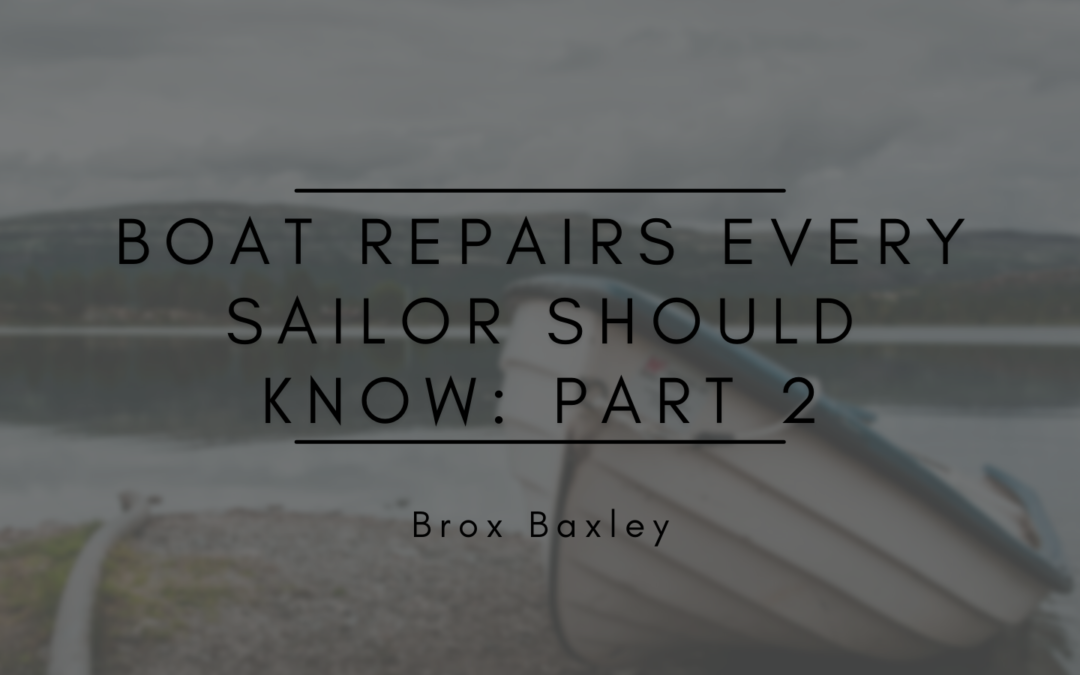Here are three more common boat repairs every sailor should be familiar with!
-
Steering Repairs
One of the most common failures that can happen at sea is losing steering. This can be caused by various factors such as the failure of the steering system, the mounting hardware failure, or the rudder breaking off. Although it’s not always possible to fix these issues, it’s still an emergency situation if the captain suddenly loses control of the boat.
Even if your steering system is relatively simple, it’s still important to have the necessary parts on hand in case it breaks. Having the necessary tools and supplies can help prevent it from happening in the first place. Besides the usual components, you should also have a variety of spare hoses, wires, and bearings.
Sometimes, a sailor might accidentally lose control of his or her boat. In this situation, he or she might want to notify other boats about the issue so they can take immediate action. In most cases, a person might try to fix the issue by using an oar or item, though the goal is to prevent the boat from losing its rudder.
-
Leak Repairs
One of the easiest ways to identify potential leaks in a boat is by removing the drain plug from the side of the vessel. Doing so will allow you to quickly remove any water that might be in the hull. After inspecting the entire structure, you might also want to find holes or breaches in the hardware.
Another way to identify potential leaks is by pressurizing the hull. For this process, you’ll need a pump, a sponge, a bucket of soapy water, and electrical tape. To cover the bleed hole under the toe strap, use electrical tape or chewing gum. Although it’s not necessary to “chew” this gum first, I’m sure you’ll want to thoroughly inspect this area.
After the bleed hole has been covered, you can then pump air into the area in the transom. After walking around the boat, grab a sponge and apply a mixture of soapy water all over the hull, deck, and fittings. You’ll want to see if the bubbles from the air coming from the solution are coming from any tiny holes or cracks.
You might have seen this technique used by a mechanic when they’re trying to find a hidden leak in a tire. The goal is to find the bubbles and then inspect the area to confirm the cause of the issue.
-
Engine Repairs
Besides corrosion and the wear and tear caused by saltwater, other common causes of engine failure on boats include fuel contamination, oil contamination, and corrosion. In addition to these, harsh environmental conditions can also affect the engines, which can make them difficult to maintain and repair. Besides these, other factors such as improper maintenance and cramped spaces can also contribute to the issue.
Although it’s not ideal to fix an engine at sea, it’s still important to store basic tools and spare parts in case the issue gets worse. In most cases, an engine can’t be repaired at sea due to its condition. However, if an issue gets catastrophic, spare parts such as spark plugs and washers can still be stored onboard.
If the engine is water-cooled, it can overheat if the intake is full of debris or seaweed. Overheating can cause an internal failure, such as a blown head gasket, and it can also affect the cylinders. Having a clean and clear water intake can help prevent this issue.
Before you start working on your boat’s water intakes, make sure that you’re not putting too much pressure on them. Also, be careful not to block the flow of water through the intake. Having a clear understanding of the boat’s specific needs can help prevent breakdowns.
Conclusion
Although it’s not necessary to know how to fix a boat in order to be a great sailor, learning how to solve problems in the moment is. This is the core reason why sailing is so important. Besides the weather, the crew, and the boat, the most critical aspect of sailing is being able to identify and resolve issues in the moment.
Having the necessary skills to properly care for your boat will allow you to improve your overall sailing performance and give you an opportunity to explore what it’s like to be a great sailor.

